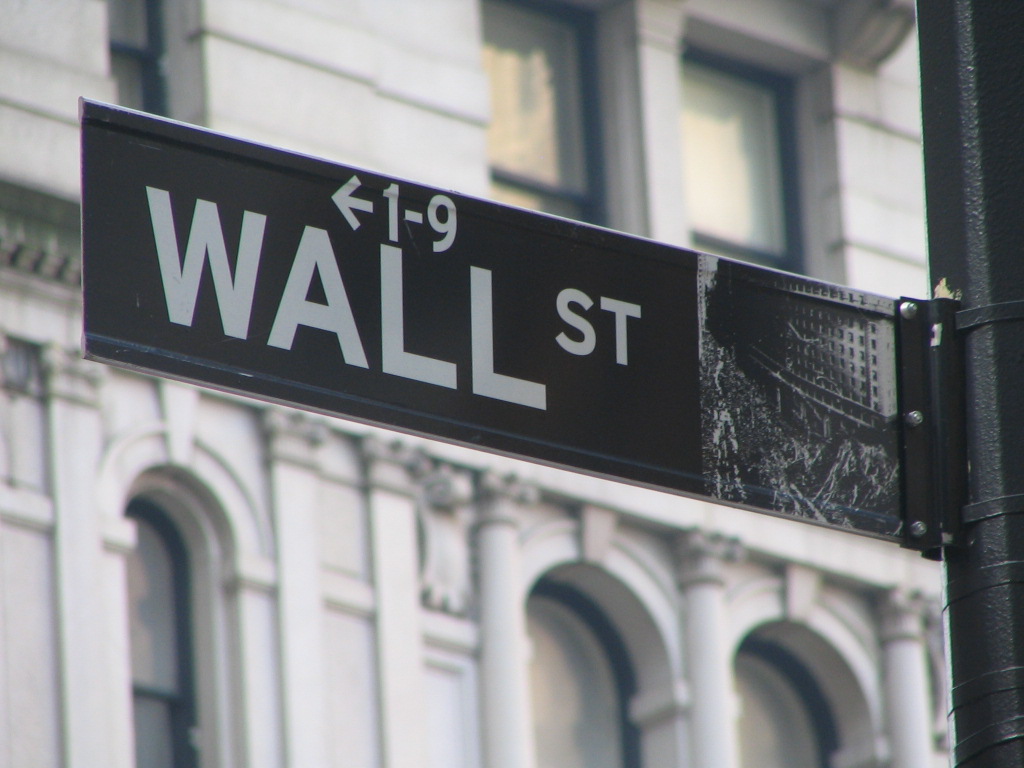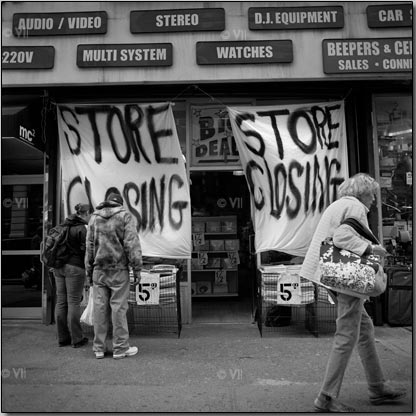Wall Street has always been defined by its signage.
Simple and effective and perhaps a bit unsettling: the iconic phrase actually is a street sign. But what a street. Hang a huge flag on the New York Stock Exchange and you have it all. (You can see that at Wall Street Flag.) Perhaps people should not be so surprised that more recent occupants have also been doing something about what you see there.
If we know anything about the Occupy Wall Street movement, it’s that signs are everywhere. More to the point, I don’t think I’ve ever seen the coverage of a protest movement so focused on featuring the handmade signs. Go to Google Image and type in Occupy Wall Street; one of the first prompts will be Occupy Wall Street Signs. You will see signs galore, plenty of them from web sites that have collected them by the dozen. In any case, they are being relayed throughout the media. There will be some obvious reasons for this visual emphasis, not least that literate demonstrators have plenty of time on their hands, which they can use to compensate for their relatively small numbers and lack of a signature event such as a march, and which then can be uploaded and relayed quickly via digital technologies.
Sure, the Tea Party had its signs which got a fair amount of play, but usually to result only in disclaimers–“Oh, no, they’re not racist!”–and the real fun was with the costumes. Other comparisons aside–and the movement in Oakland may take things in a very different direction–but it seems clear that Occupy Wall Street is about getting the message out to a public audience. If so, there are two things one might want to consider. The first, which I’ll only mention, is that one might want to ask why it is that the media ran with the right wing meme that the protests were illegitimate because they had no clear demands, agenda, or objectives. (I’ve said a bit more about this point here and here.) But that question largely answers itself.
The more interest point is one that Ashley Gilbertson brought to my attention in one of his photo essays on the recession.
The point is that the signs have always been there. The signs of economic decline, the sad traces of personal and societal pain, symbols of betrayal and abandonment–they’ve always been there. But if someone isn’t holding it up in front of a TV camera, most of the media don’t notice. And the rest of us do no better. Why should we, for many of the changes happen gradually as part of the ordinary routines of life. If it’s a sign at a mall that’s slowly emptying or at a construction site that’s been mothballed or at an unemployment office that’s overcrowded, well, it’s just one more sign. What could just be ebb and flow only later proves to be start of a flood.
Occupy Wall Street has already done the US a lot of good. You don’t even need a political program if you can simply make people start to pay attention. After all, that’s what good photographers do. In fact, we don’t need to look at the demonstrators or their signs if we will just look around and see what is there to be seen: the signs of a troubled time.
Photographs from the Wikipedia Commons and by Ashley Gilbertson, After the Fall.


More signs of the times.
http://members.efn.org/~hkrieger/w3699.jpg